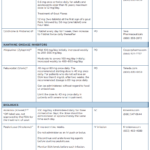“Results from written evaluations on these measures were overwhelmingly positive and indicated that participants understood key discussion points,” Ms. Batterman says. “Perhaps, as important, participants indicated they were likely to bring this information to providers to further the patient/doctor dialogue and partnership in managing their gout symptoms.”
Karen Appold is a medical writer in Pennsylvania.
References
- Zhu Y, Pandya BJ, Choi HK. Prevalence of gout and hyperuricemia in the US general population: The National Health and Nutrition Examination Survey 2007-2008. Arthritis Rheum. 2011 Oct;63(10):3136–3141.
- Krishnan E, Lienesch D, Kwoh CK. Gout in ambulatory care settings in the United States. J Rheumatol. 2008 Mar;35(3):498–501.
- Spencer K, Carr A, Doherty M. Patient and provider barriers to effective management of gout in general practice: A qualitative study. Annals Rheum Dis. 2012 Sep;71(9):1490–1495.
- Harrold LR, Mazor KM, Peterson D, et al. Patients’ knowledge and beliefs concerning gout and its treatment: A population based study. BMC Musculoskelet Disord. 2012 Sep 21;13:180.
Latest Research on Gout Treatments Targets Effectiveness of Various Medications
The most recently FDA-approved medication for gout is lesinurad, a uricosuric medication that can be used once a day as opposed to the bid regimen for probenecid. This medication is approved as an add-on medication to allopurinol or febuxostat to assist in getting a patient who has not reached their urate goal.1 “This medication has been generally well tolerated, although it’s necessary to follow renal function,” reports Theodore Fields, MD, FACP, rheumatologist, Hospital for Special Surgery (HSS), New York.
Arhalofenate, which has both uricosuric and anti-inflammatory effects, is currently being studied. The agent has URAT 1 inhibition for uricosuric effect, but in a mouse urate-induced inflammation model, it suppressed the local release of IL-1β and reduced the influx of neutrophils to the inflammatory site. This medication could therefore have the potential to serve as a uricosuric and bridge medication simultaneously.2
For most refractory patients, recently published data have confirmed the significant effectiveness of pegloticase in shrinking tophi, beyond what would be expected of the usual oral agents, and a reduction in infusion reactions in patients whose urate rises to greater than 6.0 mg/dL if the medication is discontinued proactively.3,4
Although results of published studies are not yet definitive, researchers have been exploring the risks and benefits of colchicine and of ULT in aspects of health other than gout. Colchicine has been suggested to reduce the incidence of myocardial infarction.5 Some evidence indicates that allopurinol and febuxostat delay progression of decline in renal function, and have potential cardiac benefits.6,7 A negative effect of low urate in neurologic disease (e.g., Parkinson’s disease) has been proposed.8


